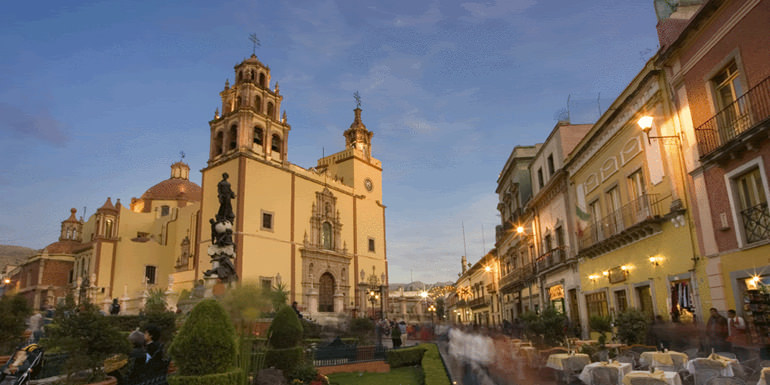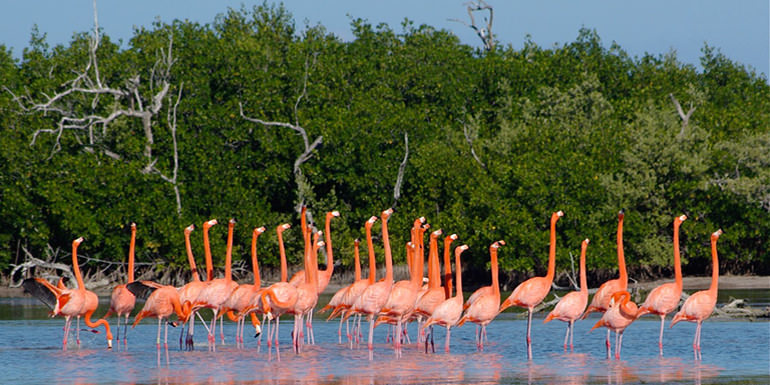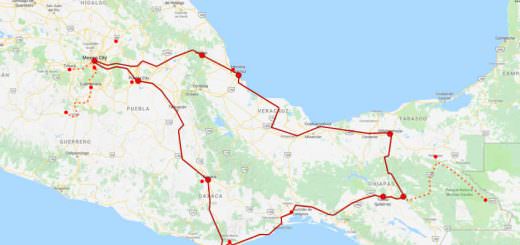
Aké
Aké is an archaeological site of the pre-Columbian Mayan.
The archaeological site Aké is located in the state of Yucatán, 40 km east of Mérida, within a 19th-century hacienda henequenera San Lorenzo de Aké, which cultivates henequen (a kind of agave).
The name Ake is a toponym that means “place of reeds” in Yucatec Maya.
Aké played an important role in the political and strategic aspects during the Classic period, between 250 and 900 AD, since it is located precisely between Izamal and the ancient city of Thó (current Mérida), surviving until the year 1450 AD.
The archaeological site Aké covers about 4 sq km.
Among the architectural ensembles still preserved, El Palacio stands out. In the central part, there is an esplanade, known as the Great Plaza. Around this area, you can see the main buildings where the ruling class lived.
One notable feature of the site is the system of pre-Columbian roads that connected settlements in the region. The remains of an ancient Maya-raised pedestrian causeway (so-called sacbe) run to Aké from Izamal.
This place has a great variety of attractions such as San Lorenzo Aké henequen farm, old shredding machines where “green gold” (henequen or sisal) is still worked, the old sacbés (roads Mayans), and a cavern-like cenote.
Visit to the ruins of Aké is not only the chance to explore the well-preserved pre-Columbian ruins. The combination of archaeological remnants, and the hacienda’s historical features, make Aké a unique and captivating destination.
History & Timeline
The architecture of the ruins is from the Early Classical period (250–550 CE).
Aké is bounded by two concentric walls, one defines the core of the settlement with an area of 4 sq km, while the other protects the core housing. The core is large and square surrounded by tall buildings measuring about 25 sq m.
A great sacbé (white road) of 32 km in length connects the central group of buildings of this site to the archaeological site of Izamal. This fact underscores the importance of Aké as a hub for regional interactions and trade.
Part of this sacbé was covered later by the wall that surrounds this Mayan city and its residential area, to protect it from invasions. As you walk within the area you will see a large esplanade called the Great Plaza, where the most important buildings are.
The Pilastras Structure is located in the North, and you will see a stele in the south-center of the Great Plaza.
Structure One, also called the Palace, with rows of stone columns atop a step-pyramid platform, is the site’s most impressive feature. While most Maya pyramids are built steeply with many narrow steps, Structure One is a gradual climb of huge, flat stone slabs.
This megalithic architectural style is an Early Classic diagnostic, and may also be seen at the sites of Izamal and Ek Balam.
Hacienda San Lorenzo de Aké
Dating back to the 19th century, the hacienda’s sprawling grounds served as a hub of henequen production, showcasing the economic importance of the industry in the region during that era.
Henequen is a fibrous agave plant that was cultivated extensively for its durable fibers that were transformed into ropes, textiles, and various industrial products. Henequen played a pivotal role in the economy of Yucatán.
The main house of Hacienda San Lorenzo de Aké reveals its historical layers through its architecture.
With three distinct construction periods – wooden beams, iron elements, and masonry – the main house stands as a physical timeline, reflecting the changing architectural styles and materials employed over time.
This evolution provides a glimpse into the progression of construction techniques and the adaptation to new materials.
As a henequen plantation, the hacienda is a window into the social and economic dynamics of the past. The lives of workers, the management of resources, and the relationships between different classes of society are etched into its walls.
Today, Hacienda San Lorenzo de Aké stands as a living testament to history, offering visitors a chance to step back in time. Visitors can wander through its corridors, envisioning the hustle and bustle of its industrial days.
The Aké chapel
The Aké chapel stands on a Mayan pyramid and two more hills are also located on the land. In this chapel, the tradition of the Black Christ is celebrated every Holy Saturday, which is more than 137 years old.
Every Glory Saturday of Holy Week, Catholics visit the Aké chapel to take the Holy Christ to Cacalchén on a pilgrimage. More than two thousand people from the town of Cacalchén go to look for the Black Christ to honor him with prayers.
It is said that years ago the town of Cacalchén was filled with death and disease and people prayed to the Black Christ to free them from these evils. This is how this tradition was born.
How to get there
Aké is located 32 km from Mérida, on Highway 80 to Tixkokob, deviation to the right in km 25.
The easiest and most cheap way to get there is by bus or by un “colectivo” from Mérida.
Let us know if this article was useful for you





















